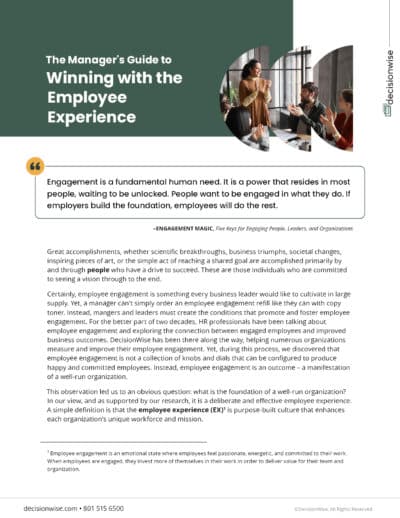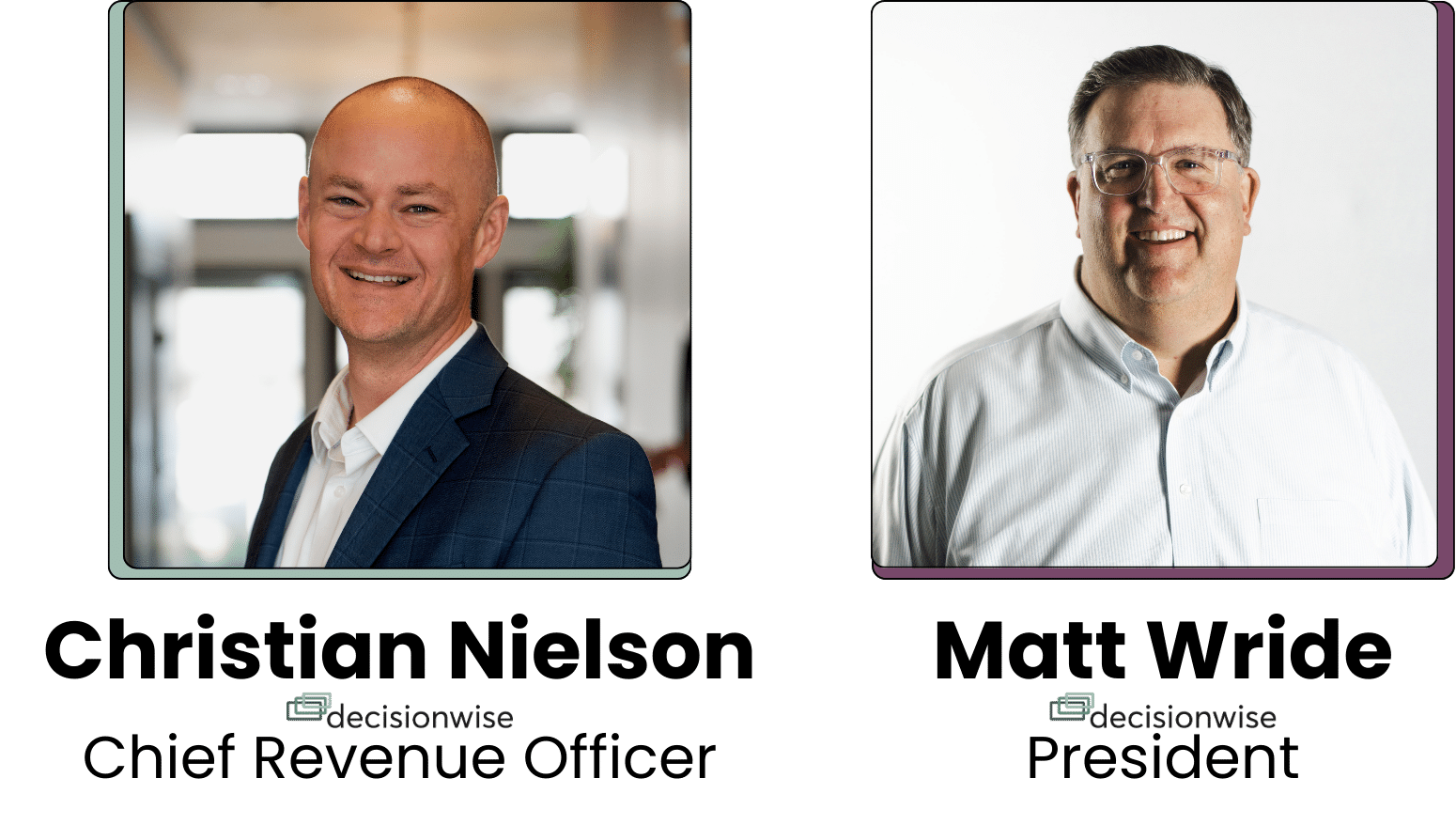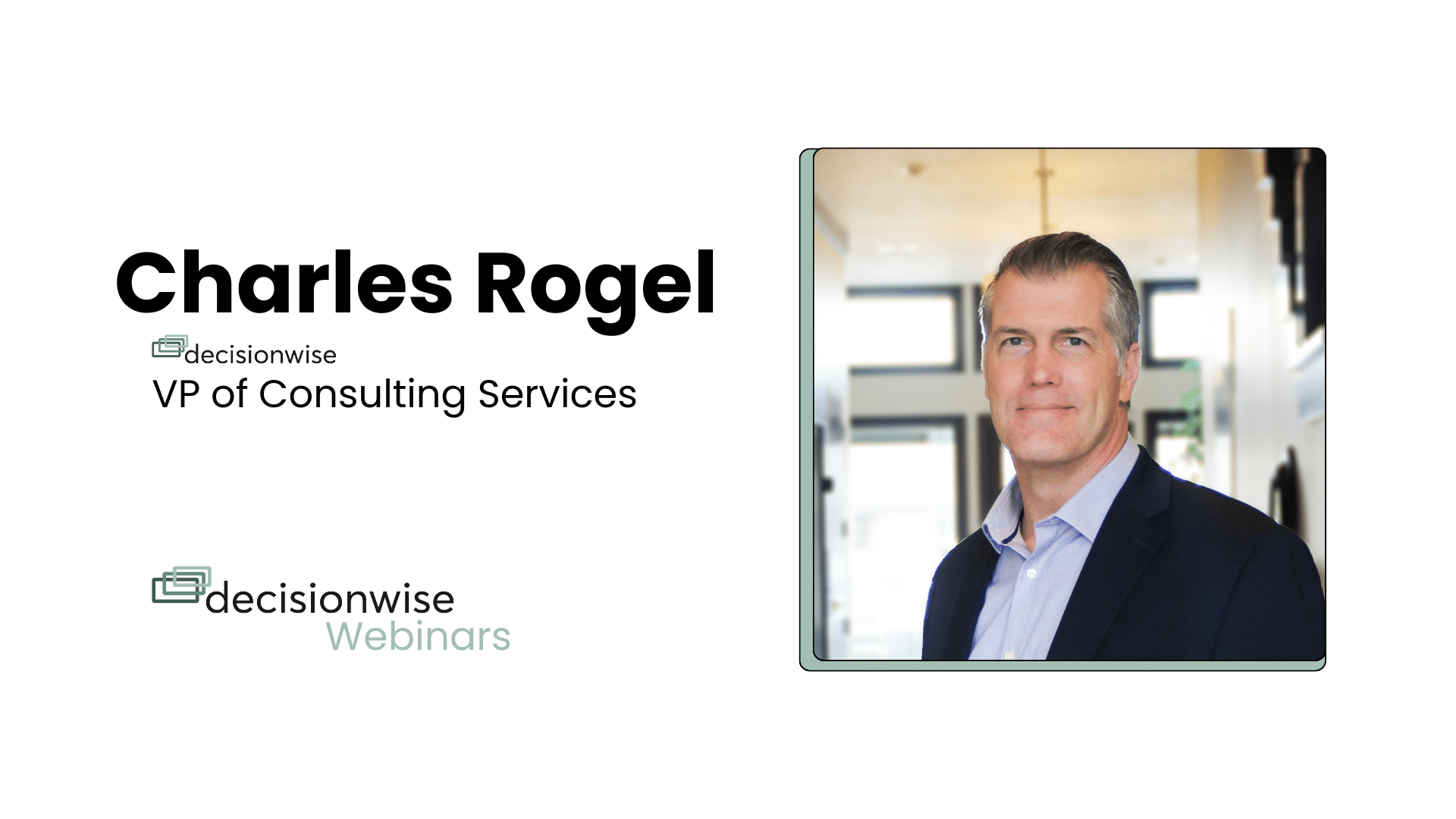
“Engagement is a fundamental human need. It is a power that resides in most people, waiting to be unlocked. People want to be engaged in what they do. If employers build the foundation, employees will do the rest.” -ENGAGEMENT MAGIC
In this guide, we walk through solid concepts for managers to create a winning experience for their employees. You will learn how to:
- Engage employees in times of chaos
- Communicate effectively with your team
- Understand your personal leadership type
- Set clear expectations
- Develop an effective listening strategy
- Act on the insights and get the business results you want
Introduction
Great accomplishments, whether scientific breakthroughs, business triumphs, societal changes, inspiring pieces of art, or the simple act of reaching a shared goal are accomplished primarily by and through people who have a drive to succeed. These are those individuals who are committed to seeing a vision through to the end.
Certainly, employee engagement is something every business leader would like to cultivate in large supply. Yet, a manager can’t simply order an employee engagement refill like they can with copy toner. Instead, mangers and leaders must create the conditions that promote and foster employee engagement. For the better part of two decades, HR professionals have been talking about employee engagement = and exploring the connection between engaged employees and improved business outcomes. DecisionWise has been there along the way, helping numerous organizations measure and improve their employee engagement.
Yet, during this process, we discovered that employee engagement is not a collection of knobs and dials that can be configured to produce happy and committed employees. Instead, employee engagement is an outcome – a manifestation of a well-run organization.
Employee engagement is an emotional state where employees feel passionate, energetic, and committed to their work. When employees are engaged, they invest more of themselves in their work in order to deliver value for their team and organization.
This observation led us to an obvious question: what is the foundation of a well-run organization? In our view, and as supported by our research, it is a deliberate and effective employee experience. A simple definition is that the employee experience (EX) is purpose-built culture that enhances each organization’s unique workforce and mission.
Listen
Understand
Act
The good news is that while you can’t necessarily create, or directly manipulate, engagement, you can build a strong employee experience – an experience that attracts the right talent, helps people do great work, and gives them a reason to become engaged. If you are looking to improve your business results, we strongly suggest you focus on building the right employee experience for your team.
Organizational Culture
A set of values, norms, guiding beliefs, & understandings that are shared by members of an organization and is taught to new members as the way to feel and think and behave.
“The way we do things around here.”
Employee Experience (EX)
The sum of perceptions employees have about their interactions with the organization in which they work.
“The impact of the culture on the employees.”
Employee Engagement
An emotional state where we feel passionate, energetic, and committed toward our work. In turn, we fully invest our best selves in the work that we do.
“The employees’ emotional response to the employee experience.”
One final thought before we dive into the details, please consider the importance of the first step in any employee experience model — the indispensable act of listening. Gwen Ifill, a pioneer in the world of journalism, put it best when she observed:
Change comes from listening, learning, caring, and conversation.
EX In a Time of Chaos
At the time this guide is being published, communities are battling the COVID-19 Coronavirus outbreak. Businesses have changed in ways that will last for decades, or even indefinitely. The way we work may never be the same. Roles will disappear and new ones will spring to life. Yet, amidst this change, the principles outlined in this guide remain the same. The challenge, though, is to implement these ideas and suggestions with empathy and understanding. We recommend you follow these six principles when addressing your employee experience during times of crisis.
First, rule number one is that you must continue listening to your employees. When done correctly, the act of reaching out to listen can demonstrate real empathy. So, the key is don’t stop listening; instead, change how you listen.
Second, use an empathetic and caring tone. When we examine typical employee survey questions, they fall into one of two camps. One set of questions is focused on scenarios that impact the employees at a personal level. For example, “I have the tools and resources I need to do my job well.” These types of questions demonstrate concern and will likely be well received.
The other group of questions is focused on settings that involve the organization like, “I would recommend this organization as a great place to work.” This later question implies that we are more worried about the organizations’ reputation than about our employees’ immediate needs. Use questions that are employee focused.
Third, follow the Goldilocks principle: not too much, not too little. Balance how often you reach out and the length of your surveys.
Fourth, rely on open-ended text questions. For example, “What is your experience like working remotely?” Or, “Tell us about your work experience right now.” If you plan on using standardized questions instead of just open-ended text question, consider adding something to the end of the survey like, “Is there anything else you would like to tell us?”
Fifth, reach out quickly in times of crisis. Keep questions simple, but more frequent in often how you pulse. Focus on themes such as employee enablement, communication, trust, and access to tools and resources.
Sixth, if you ask for feedback, regardless of good times or bad, you must share what you learned and what you are going to do with the feedback.
Before You Get Started
“If you think you’re too small to have an impact, try going to bed with a mosquito in the room.” —Anita Roddick, founder of The Body Shop
Point # 1 – Remember that employee satisfaction is not the same thing as employee engagement. Satisfaction elements such as competitive pay, employee perks, concierge services, or the latest technology tools are not foundational drivers of employee engagement. Yes, satisfaction elements must be present in order to compete for strong talent, but they do not, in and of themselves, create an experience that drives engagement. Satisfaction elements are the threshold requirements for the employee experience. They need to be present just to start the process.
Once satisfaction elements have been addressed, you will find that higher-order elements are much more important in motivating and engaging your team. These elements include finding meaning in one’s work, appropriate levels of autonomy, the ability to have an impact, etc. We will spend more time on these higher order elements later in this guide.
Point # 2 – Tailor a plan to your organization. Each organization, each workforce, each leader or manager is unique. While we believe you should utilize others’ experiences and best practices for inspiration and guidance, the right EX cannot be built by copying another’s work. It’s your team, not
someone else’s. Accept that it’s your responsibility to build an EX that has been customized to your leadership style and your team’s needs and capabilities.
Point # 3 – There is no “silver bullet” that will solve your problems. While software tools, such as artificial intelligence algorithms, machine learning models, and HCM systems promise to do it all for you, they simply cannot. Your employee experience is a human experience, and human
experiences are built by people, not software applications. Software is a tool – no more, no less. Tools help you listen. They help you organize. The real work, however, lies with you in designing and building your team’s EX.
Point # 4 – Managers are the most important part of the employee experience. Your attitude matters a whole lot. If you, as the team’s leader, model engaging behaviors, your team is far more likely to follow your lead. Consider the following observations we have collected from our large survey database:
- When a manager’s engagement score increases by just one point, we see a 213% increase in the likelihood that their direct reports will be engaged.
- When an employee’s perception of their manager is positive, the likelihood of finding fully engaged employees on that team increases by 71%.
- When an employee’s perception of their manager is negative, however, we find over eight times (8x) the expected number of fully disengaged employees.
A More Formal Definition of EX
The Employee Experience is the sum of all perceptions employees have along their employee journey, from prerecruitment to post-exit. It includes both the big and the little, the mundane and the extraordinary, the unplanned and the planned, and the successes and the failures. An employee’s experience either invites them to engage in their work, or it discourages them from giving their hearts, hands, minds, and spirit in both their professional and personal lives.
STEP #1: Build a Plan
We have defined the employee experience as deliberate culture, or the impact an organization’s culture has on its employees. Some cultures are passive – they grow organically without direction or design. Alternatively, other cultures are deliberate. EX will happen whether we act or not, but the difference between ordinary and outstanding is whether a leader is passive in their EX efforts or whether they are active and purposeful.
Consider this maxim:
Now the general who wins a battle makes many calculations in his temple ere the battle is fought. The general who loses a battle makes but few calculations beforehand. – Sun Tzu, The Art of War
Your plan should start with two key questions:
1 – What is your organization’s value proposition and mission?
2 – What is your team’s value proposition and mission within the larger organization?
Framed a bit differently, the questions you are trying to answer are why does your organization exist, and then why does your team exist within your organization? Understanding the “why” is critical when you come to last step in the Listen-Understand-Act model – Act. More to come.
STEP #2: HOW ARE YOU GOING TO COMMUNICATE WITH YOUR TEAM?
Plan how you will communicate with your team. Will you meet weekly with them? Will you use informal or formal trainings? How often do you hold one-on-one meetings? Remember that most leaders communicate less frequently than is needed
Also, consider what resources are available to help you in building your EX. To the extent possible, your EX should align with your organizational support structures instead of conflicting with them.
Here are some examples of common organizational support structures:
- Learning and development programs<
- Skills development options
- Trainings
- Tuition reimbursement programs
- Rotational programs (serving in different functions to gain broad exposure within the organization)
- Cross-functional communication programs (like committee assignments, adhoc or special purpose teams)
- Cross-functional team assignments (skunkworks projects, etc.)
- Flexible schedule programs
- Programs and initiatives to support women, diverse voices, minorities, etc.
STEP #3: UNDERSTAND YOUR PERSONAL LEADERSHIP TYPE AND SET CLEAR EXPECTATIONS.
Socrates once said, “To know thyself is the beginning of wisdom.” It’s also the beginning of your team’s EX. In our experience, leadership is built, not discovered. It takes work to build and create a leadership identity. We have also found that consistency is more important than choosing the right leadership style; provided, of course, that a chosen leadership style isn’t toxic. Again, it isn’t so much the actual leadership style a manager chooses that’s significant; rather it’s that the manager is consistent and predictable
in the style they adopt. So, choose a leadership mindset and stick to it.
Engagement, satisfaction, and happiness often depend less on the conditions in which one works and more on whether expectations are aligned and met.
– The Employee Experience, P. 36
Consider which of the following mindsets might work for you and your team:
- Do you favor a growth versus fixed mindset? Do you believe there is enough to go around? Do you follow the adage that you should seek to maximize your own welfare, just make sure others get something, too The research is conclusive that those with growth mindsets make better problem solvers, handle challenges better, and more likely to listen to feedback.
- Is learning more important to you or do you look to reward
performance and accomplishment more often? Both mindsets are
helpful, but you need to be clear with yourself on your preference so that you can align expectations with your team – help them understand what will be most important to you. - Do you favor those that plan and prepare in order to deliver with
minimal errors, or do you prefer people who jump in and get something done, even if that means error rates are higher? - Are you a risk taker, or are you focused on minimizing loss?
- Are you a servant leader?
- Are you a charismatic leader?
- Do you micromanage or do you allow for a lot of freedom and
autonomy? - How do you like to communicate?
- When should they come to you with problems?
Understanding your leadership mindset is not enough. Your team should be able to readily explain your style. If not, then you need to do some more explaining.
The following questions might help you explain your leadership style. We ask these questions to new leaders during a process we call “new leader integration.” Ask yourself the questions below. Use them to clarify your personal leadership style so that you can align expectations with your team. Think of these questions as coming from your team,
and your assignment is to answer them.
PERSONAL
- Why do you like your job?
- What are your long-term personal career goals?
- What’s important to you personally at work?
- What energizes you at work? What sucks the life out of you at work
- What about you would your friends, family, and previous co-workers warn us about?
TEAM AND PRIORITIES
- What is your #1 leadership team-related priority in the next 6 months? Year?
- Why should we choose to remain on this team? What’s in it for us?
- Do you already have a pre-determined idea of how you want to handle the next
90 days? Any surprises we need to brace for? - How open will you be with the team when it comes to confidential information?
DECISION-MAKING STYLE
- How far down will you push the decision-making process?
- Do you make decisions by gut or by data? How do you use data? How
comfortable are you with data? - How do you protect against biases and conflicts of interest in the decision-making process?
- How should decisions be made?
- Is there a negotiation period after a decision has been made – when is it over?
- What if we have concerns about a decision?
PERSONAL STYLE
- How will we know when something is important to you?
- What are your strong points? What are your weak points?
- What is your risk tolerance?
- How will we know when you are pleased? Displeased? What should we do if you lose your temper?
- What are the ground rules for contacting you (i.e., email, text, at home, dropping into your office, etc.)? How available do you expect us to be to you (response time, at home, etc.)?
- What is your philosophy and practice around status updates (frequency, degree of depth and involvement, etc.)?
- How much (and when) do you want to know about a problem? How do you handle conflict? What is your primary conflict mode/style? How do you send “zingers?”
- How much decision-making authority do we have? When is the decision ours and when is it yours?
- When and how will I receive feedback? How do you express satisfaction?
- What else do we need to clarify around the 3 P’s (People, Products, Processes)?
- What will be the working relationship/norms/lines between you, Jeff,
and Steve? (Note- this may be something for each to answer together or separately, or for Jeff to outline) - Do you accept drafts, or should everything be in final form?
- Do you like to collaborate or think alone?
- How receptive are you to innovations and process improvements?
OTHER QUESTIONS
- What behaviors do you expect of people? Swearing? Appearance?
Demeanor? - What is your definition of a top performer?
- What are your non-negotiables?
- What is your number one business priority?
- What are your long-term career goals?
STEP #4: STOP AND LISTEN
Most people do not listen with the intent to understand; they listen with the intent to reply. – Stephen R. Covey
Until now, we have asked you to do most of the thinking and acting. But, if your EX is top-down in its approach, it will fail. So, once your plans have been prepared, it’s time to stop and listen. The goal is to do much more listening than talking!
Listening in the employee context takes place within two distinct timeframes. Let’s explain. The Greeks employed two concepts of time, which they called “Chronos” and “Kairos.” Chronos moments happen during life’s normal progression. In other words, chronologically (both words share the same root). Kairos moments are different, however. Roughly translated, Kairos means the “right moment,” or what we might call “moments of truth.”
Here are a few examples to help illustrate the concept. Chronos moments are part of the employee lifecycle and they start with first impressions and recruitment, and they end with an employee’s exit and ongoing alumni advocacy. Chronos events include occurrences like anniversaries, raises, trainings, etc.
Kairos moments, on the other hand, often take place when you least expect them. They may include customer complaints, a poor performance review, unusual conflict between colleagues, etc. Kairos moments may come in bunches with long, uneventful periods in between, or they may happen regularly. There is no set pattern to Kairos moments. It goes without saying that how a leader listens inside a Kairos moment makes all the difference.
There are two other important considerations when building a listening strategy. First, understand that listening is particularly important during moments of change, such as:
- Restructurings
- Mergers
- Crises, such as pandemics and natural disasters, etc.
- New leadership appointments
- Changes in business goals
- Market and regulatory changes
- A reduction in force
PRO TIPS FOR LISTENING
When it comes to communication, George Bernard Shaw poignantly observed,
Most people do not listen with the intent to understand; they listen with the intent to reply. – Stephen R. Covey
To overcome this problem in the employee experience context, we suggest using a model that supplies everyone with a common vocabulary to express feelings and perceptions.
Over the years, we have developed the ENGAGEMENT MAGIC model, which is based on decades of research and our award-winning book, ENGAGEMENT MAGIC, Five Keys for Engaging People, Leaders, and Organizations, T. Maylett.
By using the ENGAGEMENT MAGIC model, you and your team will move beyond basic satisfaction elements to higher order needs that really shape a person’s ability to engage. This model also allows individuals to explain what they are looking for or what they need from their employee experience. For example, having been taught this model, an employee may realize they need more autonomy and now they can verbalize this need in a more effective manner. The ENGAGMENT MAGIC model allows us to use more precise language.
LISTENING TOOLS
- 1×1 interviews
- 360-degree Instruments
- Upward feedback surveys
- Lunch meetings
- Team meetings
- Org-wide surveys
- Annual surveys
- Pulse surveys
- Team surveys
- Onboarding, exit, and anniversary surveys
- Employee net promoter score questions
- Needs and resources surveys
- Internal service effectiveness surveys
- Sentiment surveys after events, communications, etc.
- Natural Language Processing chatbots
- Organizational network analysis (hidden influencers)
- Diversity & inclusion (D&I)
- Unstructured data analytics (MyAnalytics by Microsoft)
Second, you need to match the right listening tool with the right moment. For example, it might not be appropriate to use a survey to test how an employee feels after receiving their first customer complaint. In-person listening would probably be best. Alternatively, it would be of little use to conduct an annual climate survey by going around and asking each person in the room how they feel about things. A lack of confidentiality and a lack of clarity (written questions) would make that exercise more of a verbal complaint session instead of yielding actionable, quantitative data.
Here are a few other elements to consider as you build your listening campaigns.
Listening Element #1 – Identify whether you are listening chronologically or
whether you are headed into a “moment of truth” (MOT).
Listening Element #2 – What tool or setting will you use to listen to your
employees? You might ask questions during a one-on-one interview, or you might use a simple survey. Below is a chart that describes some potential listening tools
leaders can use with their employees:
Listening Element #3 – Is the listening formal or informal. We recommend both! Our natural tendency is to use informal listening strategies; it’s what we do on a daily basis with our friends, family, and co-workers. This type of natural communication, however, cannot help you as much with data analysis. It’s a good idea to systematically use surveys to ask the same set of questions, which have been carefully drafted and reviewed, to all your employees. This gives the leader a chance to compare, create benchmarks, and analyze the data. This is a quantitative approach to listening. Surveys can also be designed to promote confidentiality, where needed.
Listening Element #4 – Has something changed where we need to undertake a general or specific listening campaign? Has there been a lot of turnover? Do we have a new VP or a new business mandate?
STEP #5: TAKE THE TIME TO UNDERSTAND
“I learned to always take on things I’d never done before. Growth and comfort do not coexist.” — Virginia Rometty, CEO of IBM
You should not build a survey or undertake a listening campaign unless you are prepared to take the time to understand the feedback and then act upon what you learn. If you think it’s just the appearance of listening that matters (i.e., the gesture
is enough), then you are wasting both your time and your employees’ time.
Here are eight considerations to ponder as you move through the “understand” phase:
Understand Element #1 – Take a first pass at the data/information. Just read and listen. Don’t try to respond or act yet. Your job is to absorb and pay attention to your emotions, and make sure you are doing the leading, not your emotions.
Understand Element #2 – Organize your data and use a data visualization tool, if possible, to help you find correlations and to otherwise explore the feedback.
Understand Element #3 – Look for themes in the data. Consider the high
and lows. Look for outliers. Review open-ended comments for themes and
sentiments. See what stands out, what surprises you, and what is consistent
with your prior expectations
Understand Element #4 – Find those areas where people are having different
employee experiences. Ask yourself why? Do you see any trends
Understand Element #5 – Restate your findings in simple statements. For example, after looking at survey results and open-ended comments, combine sentiments into simple statements like, “Our team feels overworked most days and they feel like there is nothing they can do about it.”
Understand Element #6 – Categorize your findings into two buckets: “Strengths” and “Opportunities.” It is just as important, if not more important, to develop your team’s strengths as it is to find and close gaps.
Understand Element #7 – Share your findings with others in your organization to gather their insights. For example, if you know someone who works inside the customer experience function, ask for their help and insights.
Understand Element #8 – Compare your findings to your team’s mission and value proposition. What needs to change to bring your team into alignment with its mission and value proposition?
STEP #6: IT’S TIME TO ACT
“The road to success is always under construction.” —Lily Tomlin, actress, comedian, writer and producer
We have arrived at the final step in our Listen, Understand, Act model. Acting is critical because it’s the secret sauce that makes the model work. Effective action is the way you tell people that you heard them and that you care about their feedback and suggestions. So, it’s imperative that you act. Also, once you act, the next time you listen will be even more effective because you are now operating from a place of trust – they know that if they share their feelings, things will get better – and that
becomes a greater incentive to share again.
Yet, don’t act just to act. Avoid being haphazard in your approach. Choose one or two pieces of feedback upon which you will act. Keep it simple and manageable. Also, share the feedback you received, what it means to you, what you are going to do with the feedback, and why you have chosen to focus on specific areas. Again, we strongly suggest that you choose only one or two areas for improvement. Research suggests that if we choose too many action items, the likelihood of successfully accomplishing a lot of action items dramatically declines.
When action planning, include your team by following this pattern:
- Describe the insight you gleaned from the listening activity
- Take time to describe what their experience looks like
- Ask for additional insights
- Spend time brainstorming suggestions and ideas
- Narrow your options to one or two action items
- Break down action items into subtasks and ask for individuals to help with theses subtasks
- Set a time to regroup and evaluate progress
- Once action has taken place, connect the dots for your team: “You said this, we heard you. We took the following actions, and this is the positive change we have seen from our actions.” You are reinforcing the virtuous cycle of Listen, Understand, and Act.
In addition to standard methods for action planning, there are two other concepts we believe are foundational to effective action. The first concept starts in the Old West. Red Steagall, Official Cowboy Poet for Texas, said, “Son, a man’s brand is his own special mark that says this is mine, leave it alone. You hire out to a man, ride for his brand and protect it like it was your own.” Our research suggests that the connection between an employee and their organization may be the single most important driver of employee engagement (we label this connection with a capital “C”). When alignment between an employee’s values and the organization’s values and mission is high, employee engagement scores are rock solid.
We think of these employees as “riding for the brand.” They are motivated to protect the organization, like it was their own. Your job is to reinforce this concept of riding for the brand. Help your employees find Connection to the organization and help strengthen that Connection whenever possible. This doesn’t mean you make life easier, or buy them better computers, or make sure there is an onsite cafeteria; rather, it’s about helping employees see the value in what they do every day. Help make their lives meaningful.
Meaningful lives are not easy or stress-free. They are challenging and exhausting, but they are certainly worth it. Think of the last time you came home and shared, “Wow! I had really easy day at work today.” Instead, most often people proudly exclaim, “Wow! It was a hard day at work, but I accomplished so much!”
A MEANINGFUL LIFE
In a letter to his friend, the author and journalist Hunter S. Thompson once noted: In every man, heredity and environment have combined to produce a creature of certain abilities and desires— including a deeply ingrained need to function in such a way that his life will be MEANINGFUL. A man has to BE something; he has to matter.
As a leader, you should be invested in helping your employees find meaning. Even if the part they play is small, they are still part of something larger that is doing something good in the world.
CONCLUSION
“With kids, they don’t do what you want them to do when you want them to do it. Organizations don’t necessarily, either. You’ve got to listen. You’ve got to learn how to influence.” — Ellen J. Kullman, formerly Chair and CEO of DuPont.
We realize you won’t accomplish everything we’ve discussed right away. That’s okay. Building the right EX and growing employee engagement is something that takes years to perfect (think of Malcolm Gladwell’s 10,000 hour rule). This is why we suggest you use a maturity model.
One final thought about winning. We all like to win. Winning is part of why we give our best every day. However, winning only happens if there is a scoreboard. The last assignment we have for you in this guide is to do two final things.
First, build a scoreboard for your team. Help them know how and when they are winning. Make sure it is clear and easy to understand. Second, make sure your team knows and understands that each of them is part of a winning team and winning organization. When we talk about Connection to the organization, connection with a capital “C,” part of that Connection is not just that the organization’s values align with an employee’s personal values. It’s also that that the employee feels confident that their organization has a successful future in front of it – that they are part of a winning team.
Good luck!




